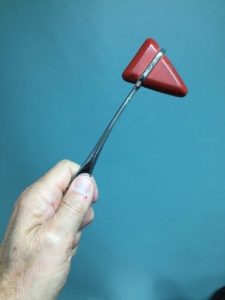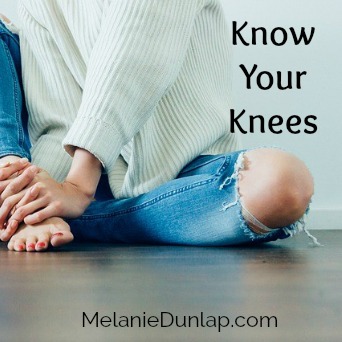The largest joint in your body can move you, diagnose the nervous system and pass gas. That’s right, your knees can do all this and more!
The knee joint is one of the strongest and most important joints in the human body. It allows the lower leg to move below the thigh while supporting the body’s weight.
The knee is where the thigh bone (femur) connects to the shin bone (tibia) and is covered by the kneecap (patella). Ligaments are the main stabilizing structures of the knees, while the cartilage absorbs shock and reduces friction.
The knee is a synovial hinge joint which means it can bend, straighten and twist while being encapsulated in a fluid filled sac. The capsule surrounding the joint is filled with synovial fluid that nourishes and lubricates the knee allowing it to move smoothly.
Movements at the knee joint are essential to many everyday activities, including walking, running, sitting and standing. Knees make walking much more efficient. Just try walking without bending your knees and you will see how much harder it is.
If you’ve read this far you are probably still wondering about how your knees can pass gas. Have you ever heard your knees “pop”? That loud popping sound when you bend or straighten your legs. It doesn’t hurt but makes you sound old.
Your knees are passing gas.
The popping sound comes from bursting nitrogen bubbles in the synovial fluid surrounding the joint. The technical term for this is cavitation, and it is what happens when you pop your knuckles. It sounds painful from the outside, but it doesn’t hurt.
If there is lasting pain when your knees pop it could indicate something more than gas and you should talk to your health professional.

But don’t be surprised if you have a knee-jerk reaction the next time you visit the doctor. If you are old enough to read this blog, then you have probably been hit in the knee with a little rubber hammer by a doctor. Your leg is bent and not touching the ground when you are struck right below the kneecap and your leg makes an involuntary kicking movement.
The sharp tap of the hammer has found the patellar tendon and it causes a slight stretch in the quadricep muscles, they react by contracting and straightening the leg in a kicking motion. An exaggerated kick or no kick at all can be an indicator of damage to the central nervous system. It can also indicate thyroid imbalance.
What if there really is pain in your knee? Lingering pain can be caused by an injury or degeneration of parts of the knee joint. The most common injuries to the knee are fractures, mostly the kneecap, ligament damage that requires surgery, dislocation of the knee and tears in the cartilage.
Degenerative pain can indicate things like arthritis and bursitis of the knee. The knee has 14 small fluid filled sacs called bursa that reduce the friction between the bones and soft tissues to prevent inflammation. If one or more of these sacs gets inflamed from overuse or excessive friction they can swell and cause bursitis. Degeneration of the knee cartilage can cause the pain, stiffness and swelling symptoms of arthritis.
Pain in the knee can also be a signal that we have some unresolved energy issues. Knees represent our ability to move forward in our life. Louise Hay, in her book Heal Your Body, categorizes knee problems as stubborn ego and pride, inability to bend, fear and inflexibility. The affirmation she gives to counteract knee problems is “I bend and flow with ease and all is well.”
Your knees do a great job of supporting you and some simple self care can keep them healthy and strong. Here are some tips to keeping your knees happy:
~ Strengthen the muscles: Strong quadriceps and hamstrings help stabilize and absorb the stress you put on your knee. Hip and core muscle strength is also important for proper function and gait.
~ Lose weight: Each additional pound you carry translates to another 4 pounds of pressure on the joints.
~ Drink plenty of water: Joints need water for proper lubrication and glide. Dehydration can cause shrinkage in the cartilage creating misalignment.
~ Be mindful of squats and lunges: Don’t bend your leg beyond a 90-degree angle; make sure your knee stays directly over your foot.
~ Walk: Walking raises your cardio with the least amount of stress on your joints helping you stay active and mobile.
~ Eat healthy: Eating a diet rich in anti-inflammatory foods can help reduce pain and stiffness.
~ Self Massage: Proper circulation is critical for knee health. Massaging the knee before and after exercising increases the circulation and reduces the chances of injury. Increased circulation also helps prevent degenerative diseases. Using Dragon Balm for your knee massages stimulates even more self-healing.
With mindfulness and regular maintenance, you can keep your knees healthy and carrying you forward for many years to come.
If you want to be healthy and vibrant as you age book a wellness session with Dr. Melanie today! Click here for a free discovery call.
